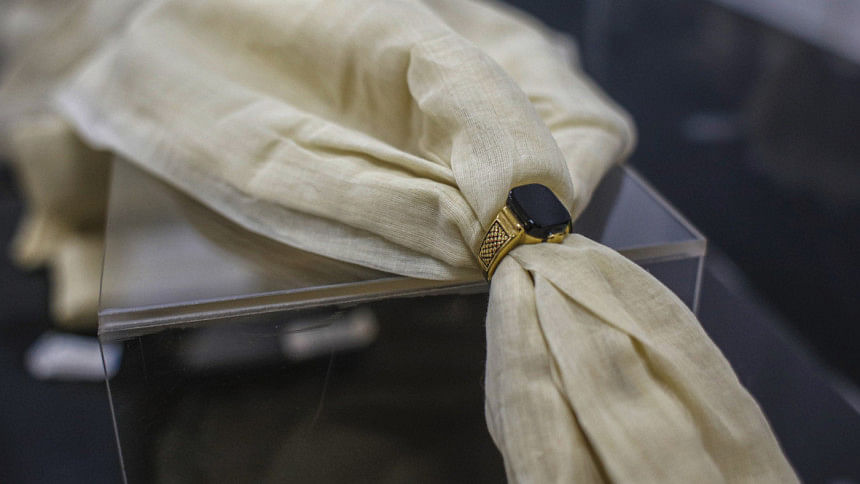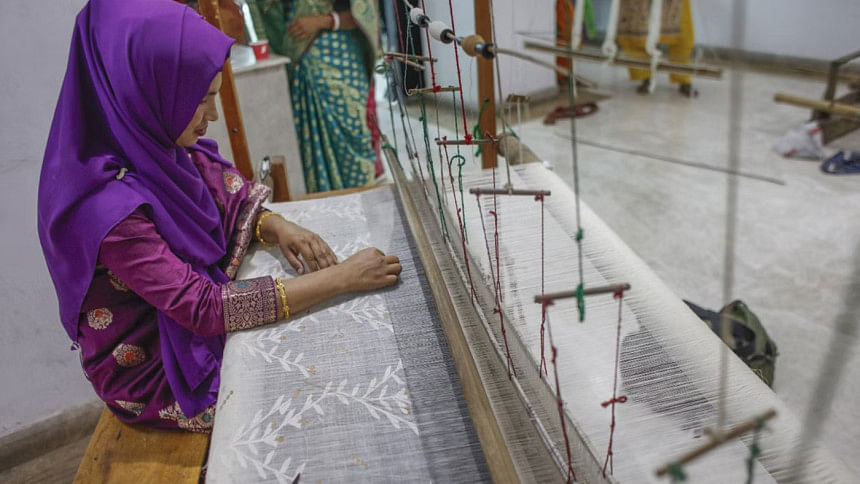Muslin revival to face question if not made affordable

If the process of producing muslin, revived through government research in 2021, cannot be commercialised, the success will be under question, said Textiles and Jute Minister Golam Dastagir Gazi yesterday.
The process is very complicated and laborious and the researchers went through a lot of adversity, he said.
It took about seven months to make a muslin sari of medium quality and so its price is very high, beyond the purchasing power of the masses, he said.
If the masses cannot purchase muslin, questions will arise. Therefore, through commercial production, muslin should be kept within the purchasing power of common people. Only then will the research be fully successful, he said.
If the private sector gets involved in the commercialisation of muslin, they will be able to produce products of various designs, he said.
The minister was addressing a seminar on the revival and potential of investment organised by Bangladesh Handloom Board at Bangladesh Parjatan Corporation in the capital's Agargaon.
It took about seven months to make a muslin sari of medium quality and so its price is very high, beyond the purchasing power of the masses
The lost muslin yarn technology used to churn out exceedingly delicate fabrics much coveted in the 17th and 18th centuries the world over was revived by an expert team of the government in 2021.
In the ancient and medieval period, muslin made by weavers of Dhaka became a status symbol for the rich and aristocrats. In 1747, muslin exports fetched Tk 28.5 lakh, found the researchers.
The Tk 12.1 crore revival project came into being after Prime Minister Sheikh Hasina asked to do so during a visit to the Ministry of Textiles and Jute in October 2014.
"The muslin we have made is 99 per cent similar to the cloth preserved in the UK's Victoria and Albert Museum and the National Museum in Bangladesh," said M Monzur Hossain, chief scientist of the project titled "Bangladesh's Golden Tradition Muslin Yarn Making Technology and Recovery of Muslin Fabrics (Phase I)".
A muslin sari with no designs can now be sold for Tk 6,15,840 while one with medium designs Tk 8,45,640, estimates Ayub Ali, project director and chief planning officer at Bangladesh Handloom Board.
One with heavy design will be Tk 11,50,740, he added.

To increase its use, the price has to be brought within the purchasing power of the masses, said State Minister for Planning Shamsul Alam.
The acquisition of muslin's geographical indication certificate and patent has created the possibility of sustainable development and expansion of the country's traditional handloom industry, said Foreign Secretary Masud Bin Momen.
Now to brighten the image of Bangladesh in the international arena, initiatives have to be taken to spread this achievement all over the world, he said.
Use of muslin cannot spread if it is not commercially viable, said Faruque Hassan, president of the Bangladesh Garment Manufacturers and Exporters Association.
All kinds of cooperation will be given for the promotion of muslin products, he said.
If the use of a fabric is not diversified, it will not survive, said Bangladeshi fashion designer and former international model Bibi Russell.

 For all latest news, follow The Daily Star's Google News channel.
For all latest news, follow The Daily Star's Google News channel. 



Comments